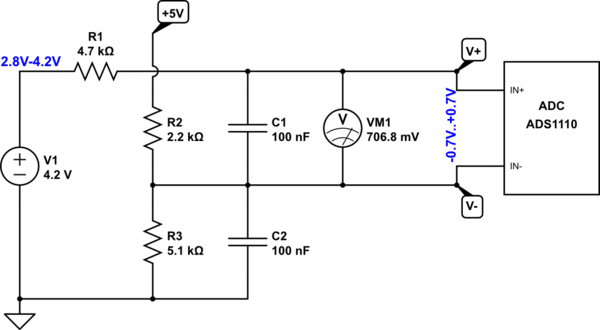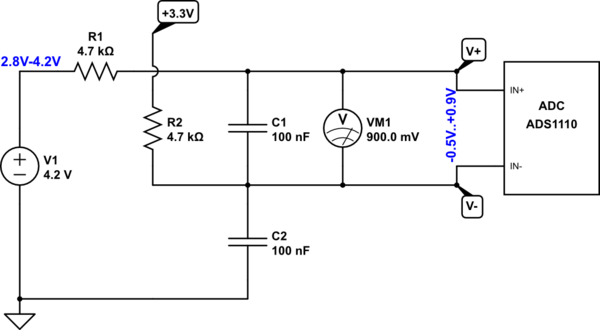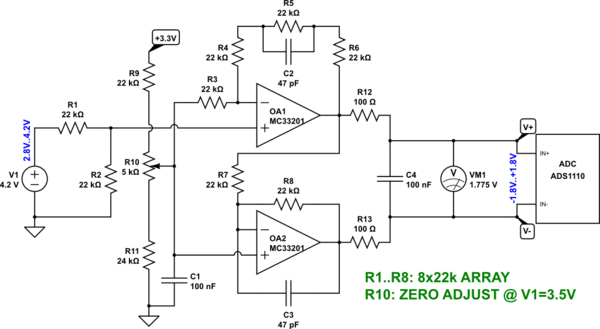The problem is, I connected the battery's negative terminal to VIN- and the PCB is already assembled and everything.
The PCB will have to change, since connecting any high-power source directly to the A/D inputs is ill advised. You need some sort of overcurrent protection should the ADC fail, or should there be transients on the battery that will kill the ADC, turn it into a resistor, and proceed to destroy the MCU.
It is fine to start prototypes with a PCB layout, as - if you're quick at it, and have many products in the pipeline - it will speed things up vs. sticking wires into holes on a breadboard. But that doesn't mean you should expect that PCB to survive unchanged after you began to test it - especially if you don't have much experience with such circuits and can't be quite sure based on past projects that there's a good chance it will work as-is.
So, it's all right as long as you treat the PCB as the prototype it is - and expect, as you should, that there will be a 2nd PCB in the works after you correct mistakes.
The connection of battery's (-) terminal to GND is OK for basic functionality. But: ADS1110's single-ended input range is 0-2.048V. So, you'd be wasting one bit of resolution by connecting the battery directly to the ADC.
We need to map the 0-5V voltage to the differential input range of the ADC. Ideally, 0V should be about -2V, and 5V should be about +2V differential.
Using a 5V ADC supply, we can have the following circuit:

simulate this circuit – Schematic created using CircuitLab
It doesn't use the full ADC input range, since there's no amplification available, but it does the job. Similarly, we can make it work for a 3.3V VCC:

An alternative approach could offset the input voltage - the resolution is the same as above, but the stability of the 3.3V supply is not influencing the measurement anymore. A lower current reference such as LM385-2.5 etc. should be used to lower the quiescent current. There are excellent, modern, micropower references that could be used for that purpose.

Alternatively, we could use a double op-amp to convert the single-ended battery input to a fully differential voltage:

The zero adjustment should be set at battery voltage of 3.5V: the ADC input voltage should be 0V differential (between V+ and V-).
Using a thick-film or thin-film array for R1..R8 improves the stability of the circuit, as well as minimizing the unadjusted error, since the resistor ratios in an array typically match better than their absolute values, even if the array's ratio tolerance is not specified.
OA1, OA2 are two halves of just about any low power rail-to-rail input/output (RRIO) op-amp. It could be a micropower or nanopower type with 40-50kHZ GBW, or higher.





